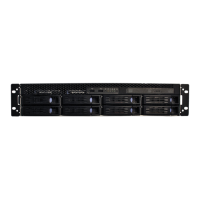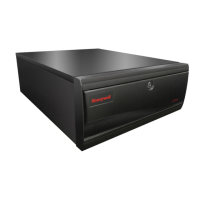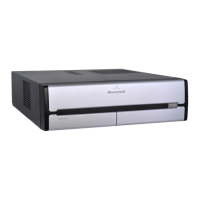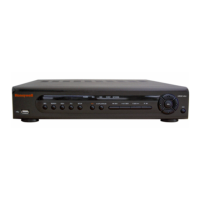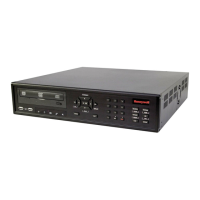. . . . .
APPENDIX A
VMD Settings and Motion-based Recording Configuration
MAXPRO NVR 3.1 Operator’s Guide 221
Note: The camera only measures motion inside the drawn box. For example, a person
or vehicle moving along the boundary of the box may or may not trigger an
alarm, because their motion is only partially evaluated. Therefore, it is important
to adjust the region-of-interest boxes to fully cover the required areas of interest.
3. Test your initial configuration setup by observing VMD performance to ensure that
relevant scene motion triggers alarms and to ensure that the camera is not reporting false
alarms (such as VMD alarms triggered due to image noise). In cameras with a wide field
of view, or when activity happens far away from the camera, people and vehicles may
appear rather small in the image. In such cases, it may not be possible to apply a single
area of interest to the whole field of view to reliably detect motion. In such cases,
Honeywell recommends covering the camera view with multiple, smaller region-of-
interest boxes, concentrating on specific areas where motion alarms are important, such
as entrances, restricted access areas, and so on.
4. Use the medium sensitivity of 50% as the initial setting. You can adjust this further if
required.
Note: Observe VMD performance in all expected lighting conditions after the initial
configuration is applied. Ensure that relevant scene motion triggers alarms and
ensure that the camera is not reporting false alarms (such as VMD alarms
triggered due to image noise).
Increasing VMD Sensitivity
If the relevant scene motion does not trigger VMD alarms, try the following adjustments to
increase VMD sensitivity.
• Decrease the sensitivity level from 80% to 50%, or from 50% to 30%. This
change causes smaller objects to trigger alarms and it requires smaller contrast
level to report an alarm.This should be the primary adjustment mechanism.
• Reduce the size of the region-of-interest box and, if needed, add more regions.
Note that this adjustment causes smaller objects to also trigger VMD alarms.
Note: After VMD sensitivity is increased, observe the performance in other lighting
conditions in case further tuning is required to prevent false alarms.
Decreasing VMD Sensitivity
If VMD alarms are triggered even when there is no motion and no significant changes in the
video, try the following adjustments to decrease VMD sensitivity.
• Increase the sensitivity level from 30% to 50%, or from 50% to 80%. This primary
adjustment mechanism increases the required contrast level (or amount of
noise) required to trigger an alarm. Higher sensitivity levels also require larger
amounts of motion to be observed before a VMD alarm is triggered.
• Increase the size of the region-of-interest box. This adjustment prevents smaller
objects (or smaller areas of noise) from triggering VMD alarms.
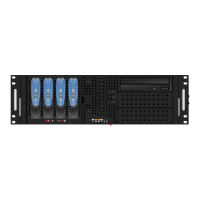
